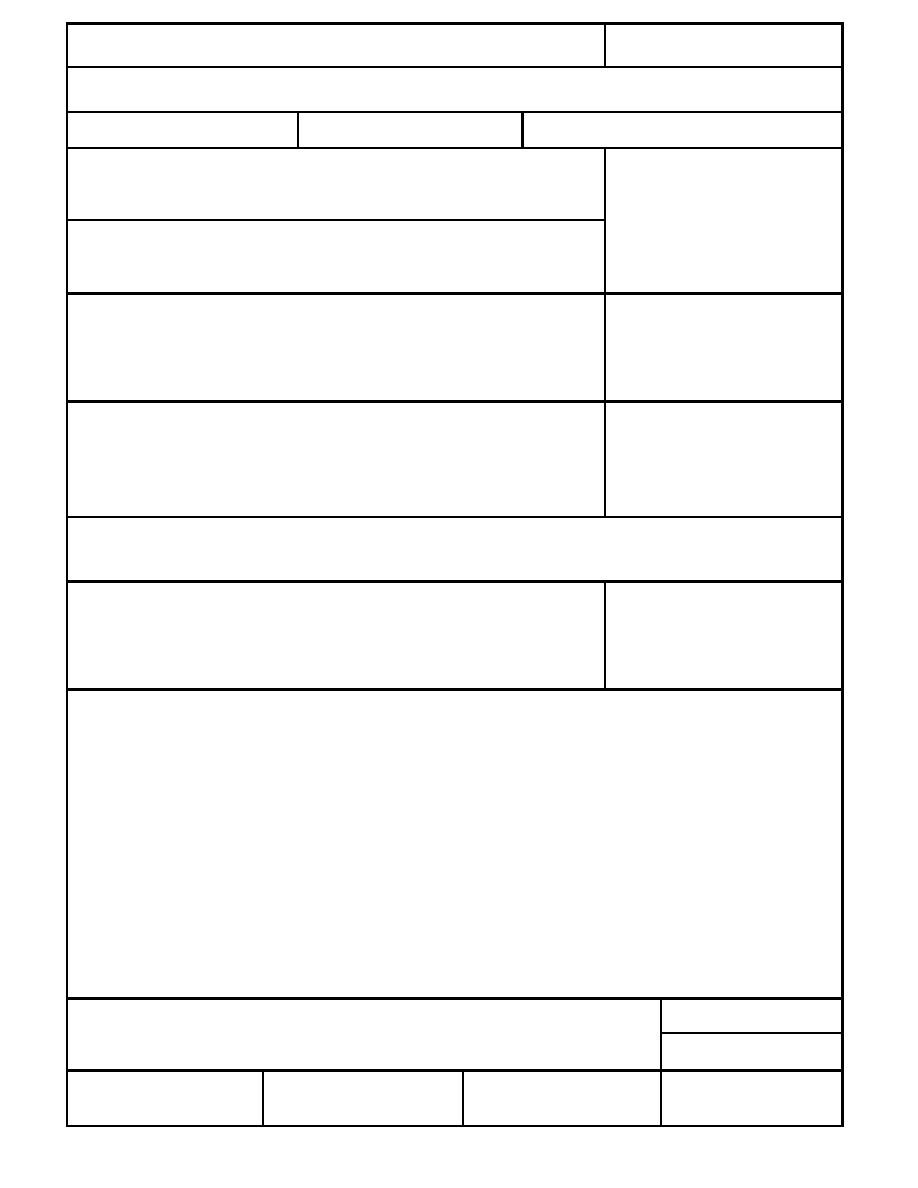
Form Approved
REPORT DOCUMENTATION PAGE
OMB No. 0704-0188
Public reporting burden for this collection of information is estimated to average 1 hour per response, including the time for reviewing instructions, searching existing data sources, gathering and
maintaining the data needed, and completing and reviewing the collection of information. Send comments regarding this burden estimate or any other aspect of this collection of information,
including suggestion for reducing this burden, to Washington Headquarters Services, Directorate for Information Operations and Reports, 1215 Jefferson Davis Highway, Suite 1204, Arlington,
VA 22202-4302, and to the Office of Management and Budget, Paperwork Reduction Project (0704-0188), Washington, DC 20503.
1. AGENCY USE ONLY (Leave blank)
2. REPORT DATE
3. REPORT TYPE AND DATES COVERED
August 1997
4. TITLE AND SUBTITLE
5. FUNDING NUMBERS
Soil Remediation Demonstration Project: Biodegradation of Heavy Fuel Oils
6. AUTHORS
Charles M. Reynolds, Prasanta Bhunia, and Brent A. Koenen
7. PERFORMING ORGANIZATION NAME(S) AND ADDRESS(ES)
8. PERFORMING ORGANIZATION
REPORT NUMBER
Special Report 97-20
U.S. Army Cold Regions Research and Engineering Laboratory
72 Lyme Road
Hanover, New Hampshire 03755-1290
9. SPONSORING/MONITORING AGENCY NAME(S) AND ADDRESS(ES)
10. SPONSORING/MONITORING
AGENCY REPORT NUMBER
Office of the Chief of Engineers
Washington, D.C. 20314-1000
11. SUPPLEMENTARY NOTES
For conversion of SI units to non-SI units of measurement consult ASTM Standard E380-93, Standard Practice for Use of the
International System of Units, published by the American Society for Testing and Materials, 1916 Race St., Philadelphia, Pa. 19103.
12a. DISTRIBUTION/AVAILABILITY STATEMENT
12b. DISTRIBUTION CODE
Approved for public release; distribution is unlimited.
Available from NTIS, Springfield, Virginia 22161
13. ABSTRACT (Maximum 200 words)
Treatment of oil-contaminated soils is necessary to protect water supplies, human health, and environmental
quality; but because of limited funds, cleanup costs are often prohibitive. High costs are exacerbated in cold re-
gions such as Alaska, where spills are often in areas inaccessible to heavy equipment and where there is limited
infrastructure. Owing to the lack of infrastructure, widespread fuel distribution systems, and the need for heating
in the cold climate, there are numerous small-scale oil spills. Low-cost treatments applicable to small-scale spills
are needed. The object of this CPAR project was to examine using cost-effective, on-site bioremediation techniques
for heavy-oil-contaminated soil in cold regions. Both heavy-oil and diesel-contaminated soils were used to com-
pare landfarming, a low-intensity treatment, to pile bioventing, a costlier treatment. For each soilcontaminant
combination, we compared nutrient additions to a control with no nutrient additions. Under the conditions of this
study, landfarming with nutrient additions was as effective for treating diesel-contaminated soil as was bioventing
with nutrient additions. For heavy oils, landfarming with nutrients resulted in lower soil concentrations after one
year, but differences among treatments were not statistically significant. Because landfarming does not require
pumps, electricity, or plumbing, all costs are less than for bioventing. The minimal requirements for infrastructure
also make landfarming attractive in remote sites typical of cold regions.
14. SUBJECT TERMS
15. NUMBER OF PAGES
Biotreatment
Diesel
16
Bioventing
Land farming
16. PRICE CODE
Crude oil
Petroleum
17. SECURITY CLASSIFICATION
18. SECURITY CLASSIFICATION
19. SECURITY CLASSIFICATION
20. LIMITATION OF ABSTRACT
OF REPORT
OF THIS PAGE
OF ABSTRACT
UNCLASSIFIED
UNCLASSIFIED
UNCLASSIFIED
UL
Standard Form 298 (Rev. 2-89)
NSN 7540-01-280-5500
Prescribed by ANSI Std. Z39-18
298-102



 Previous Page
Previous Page
